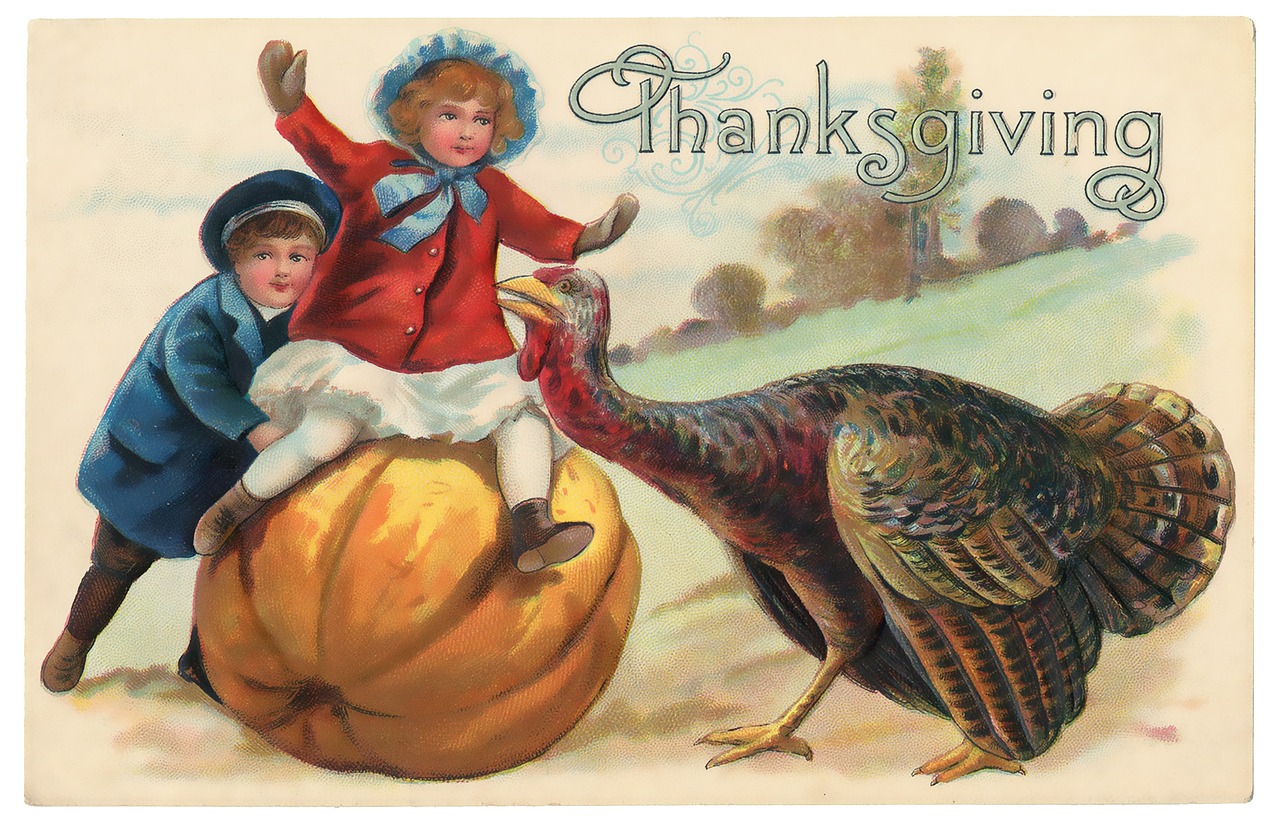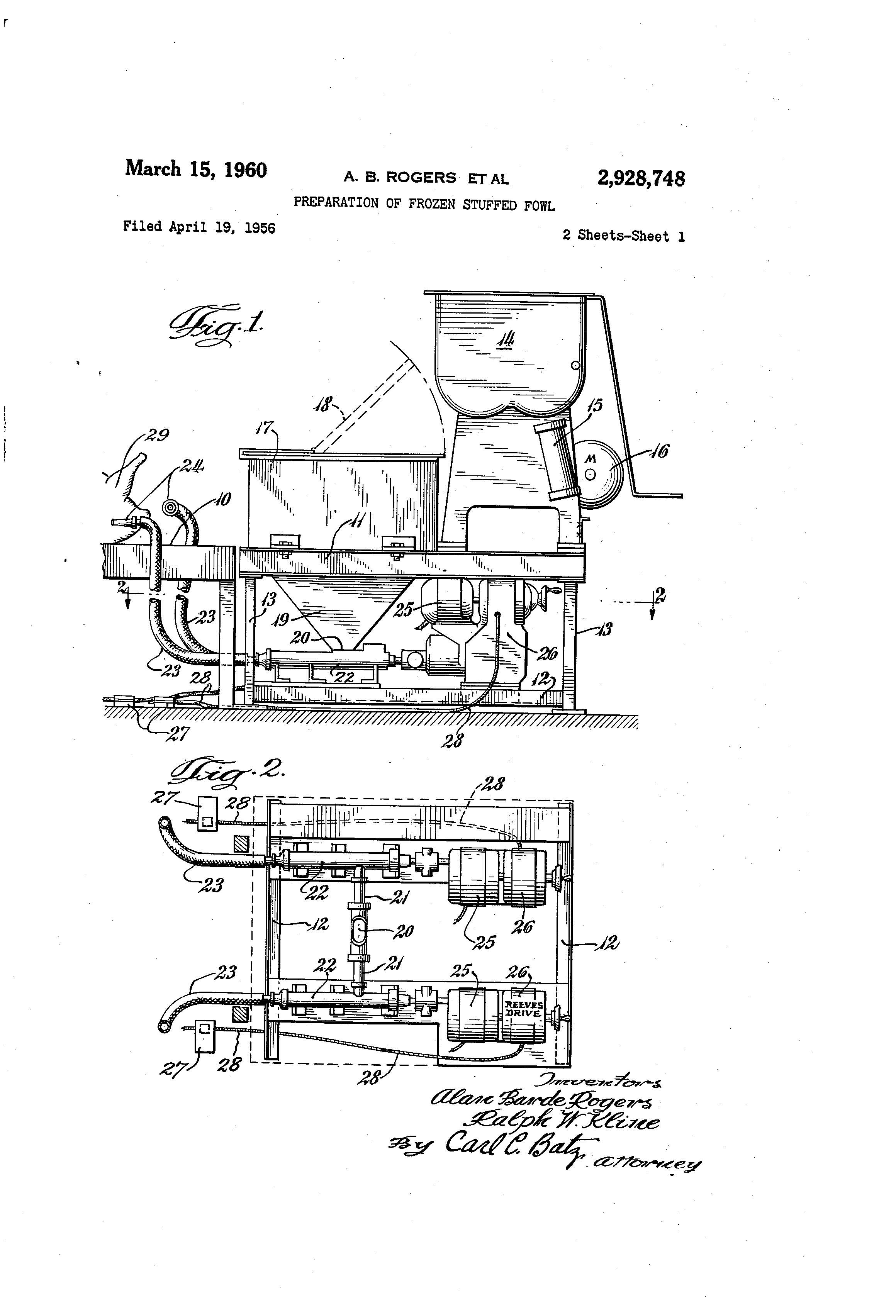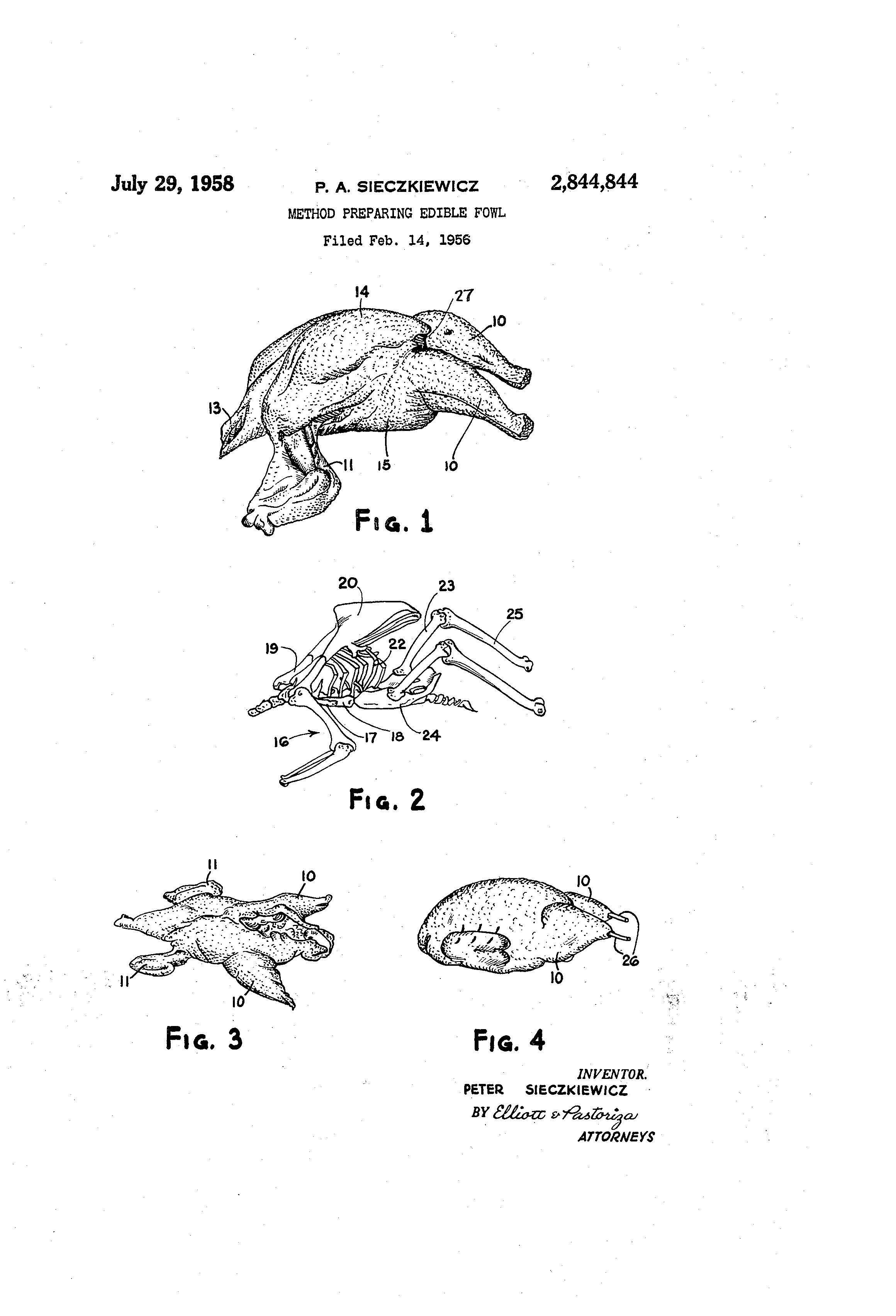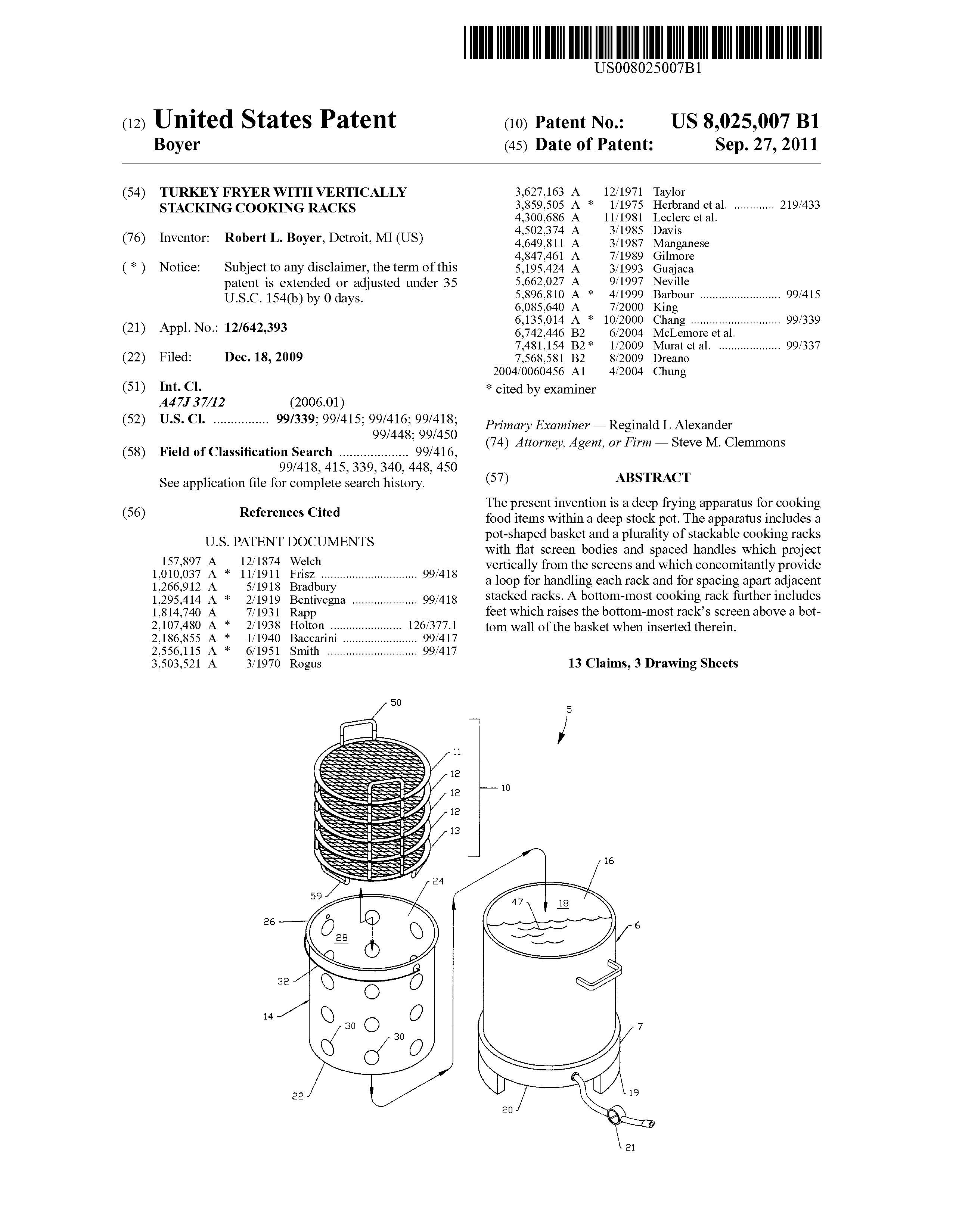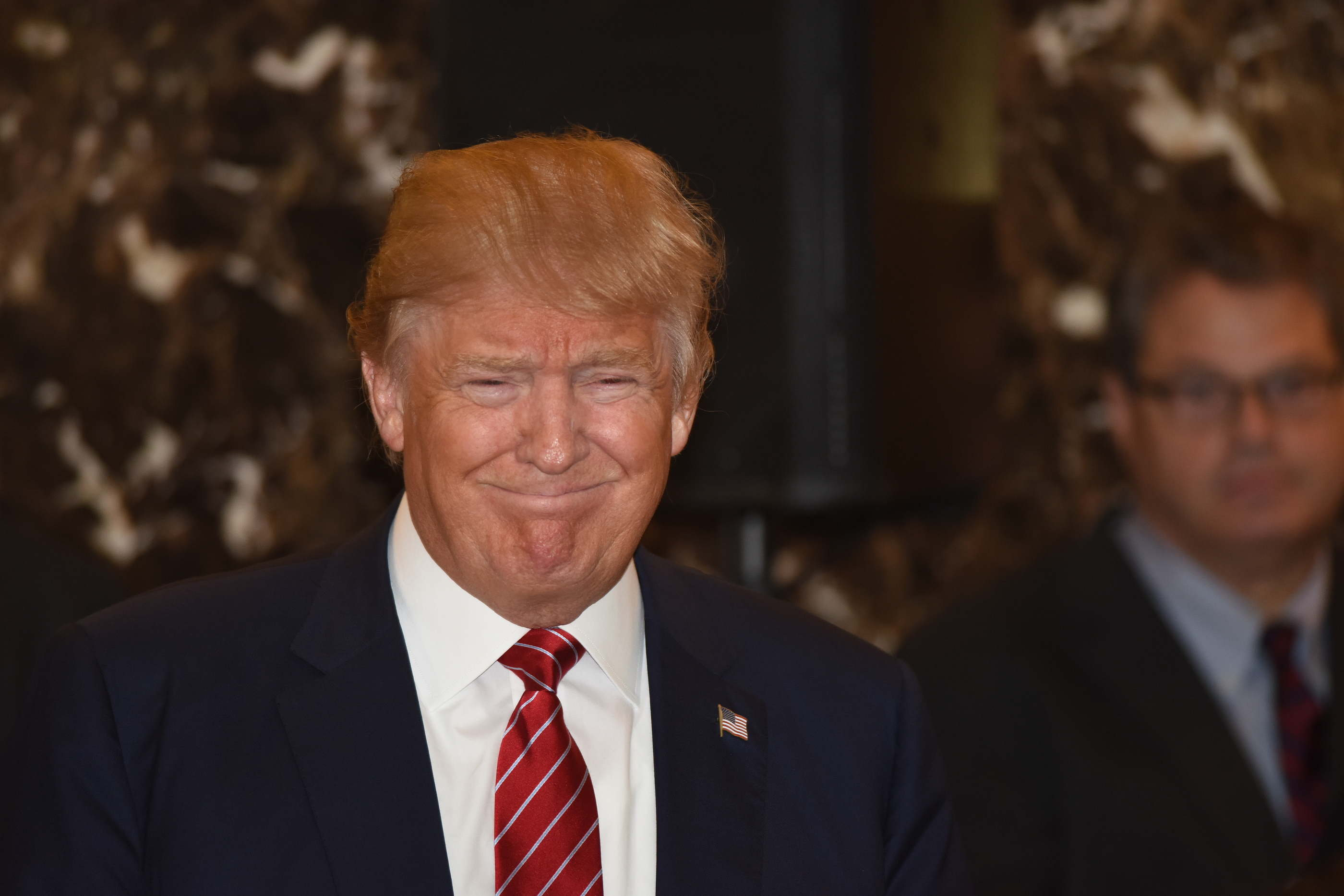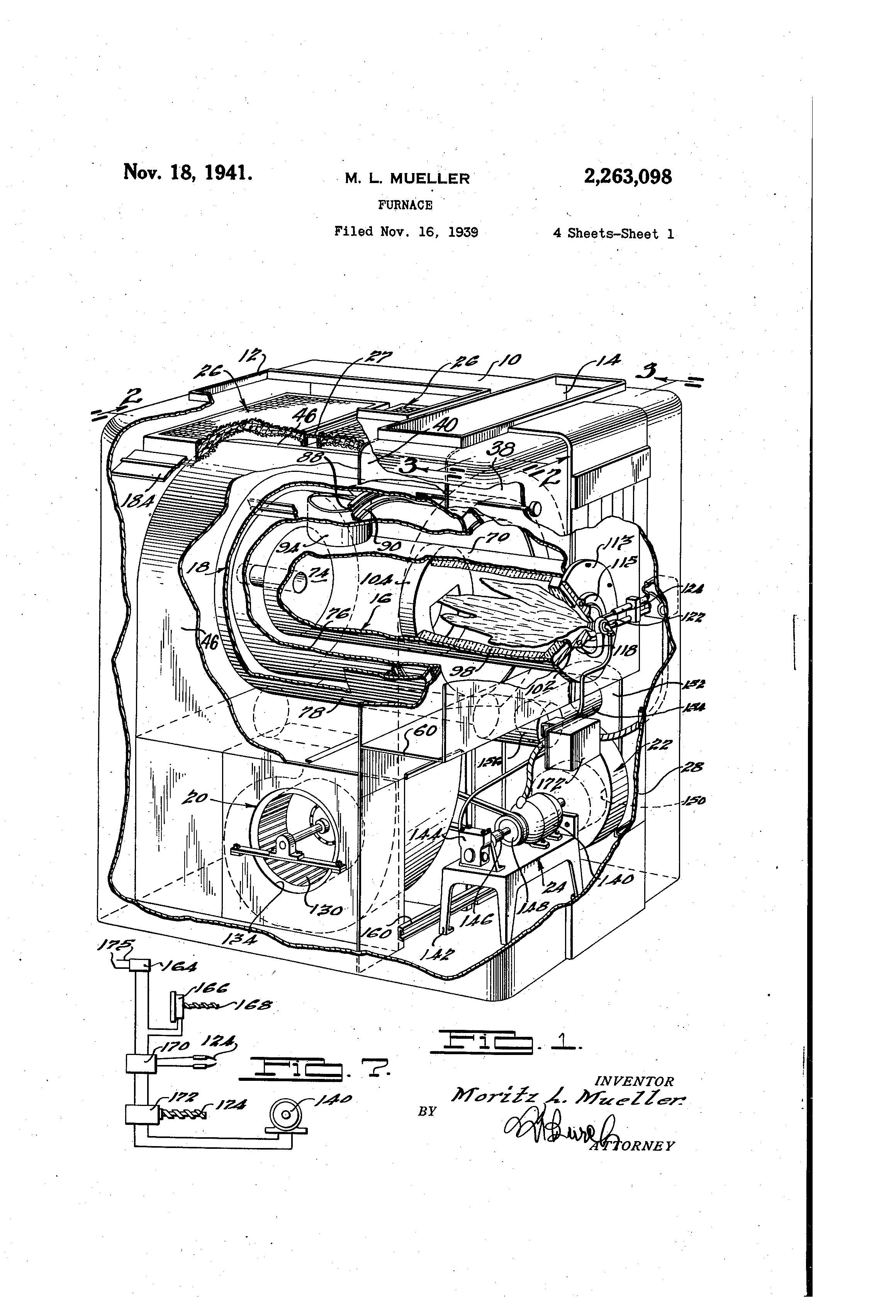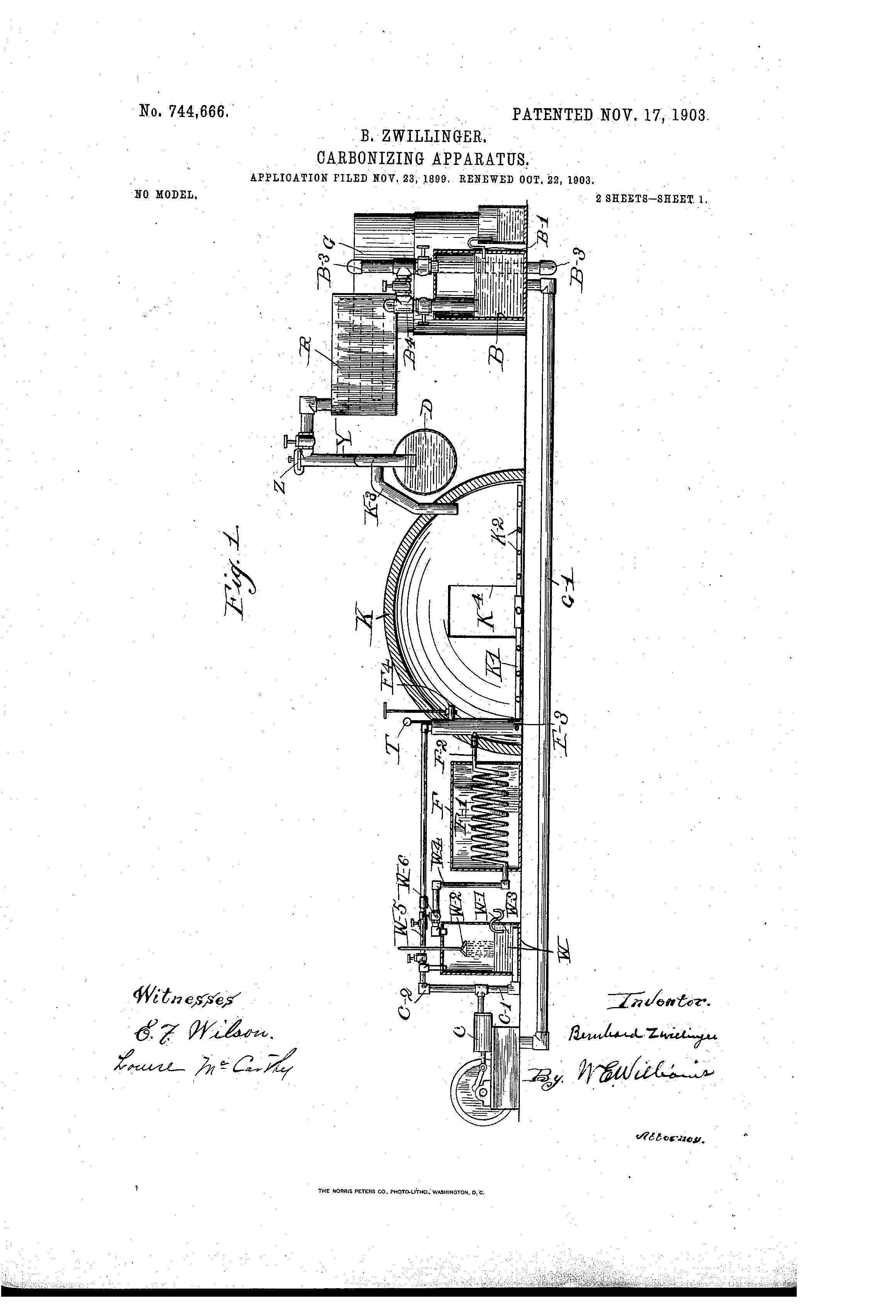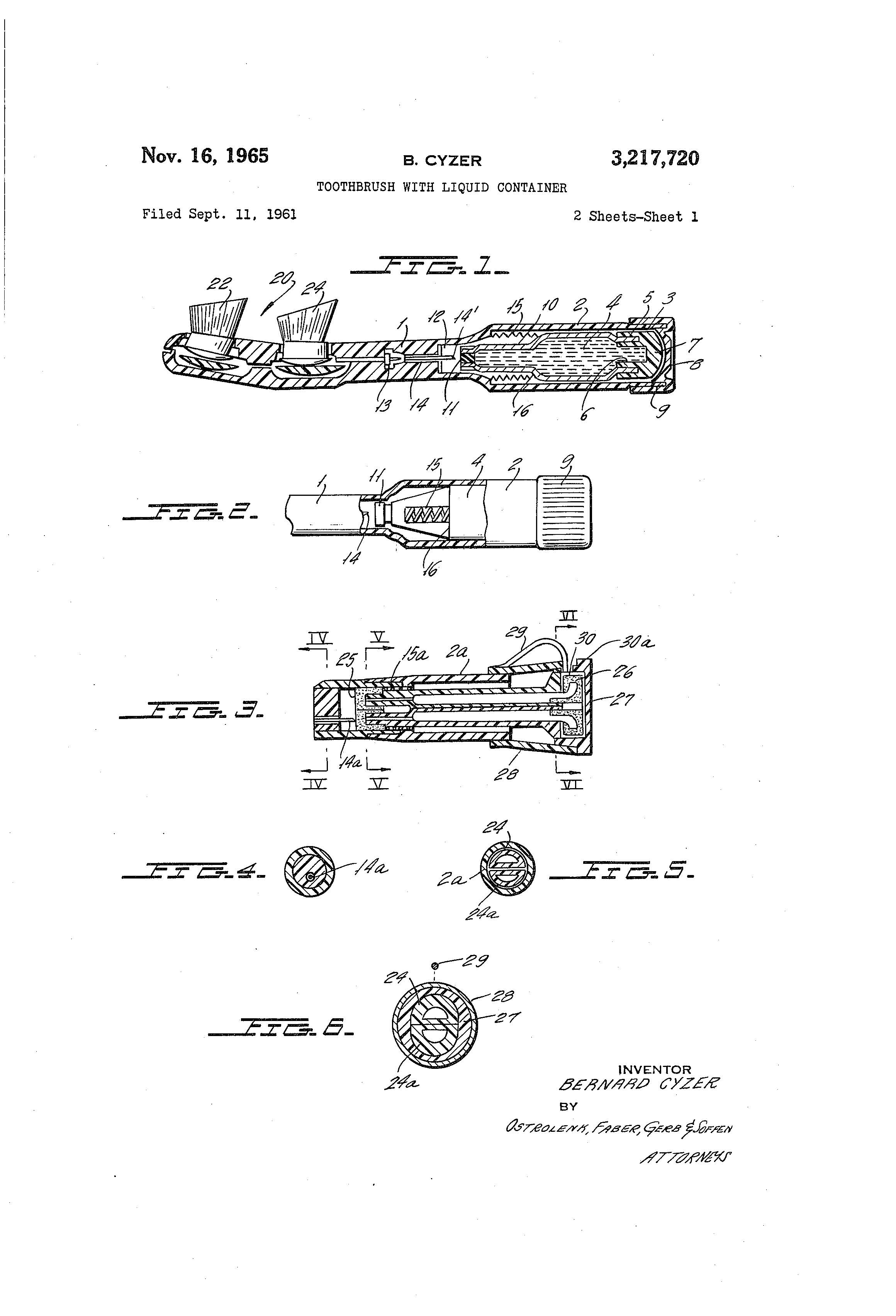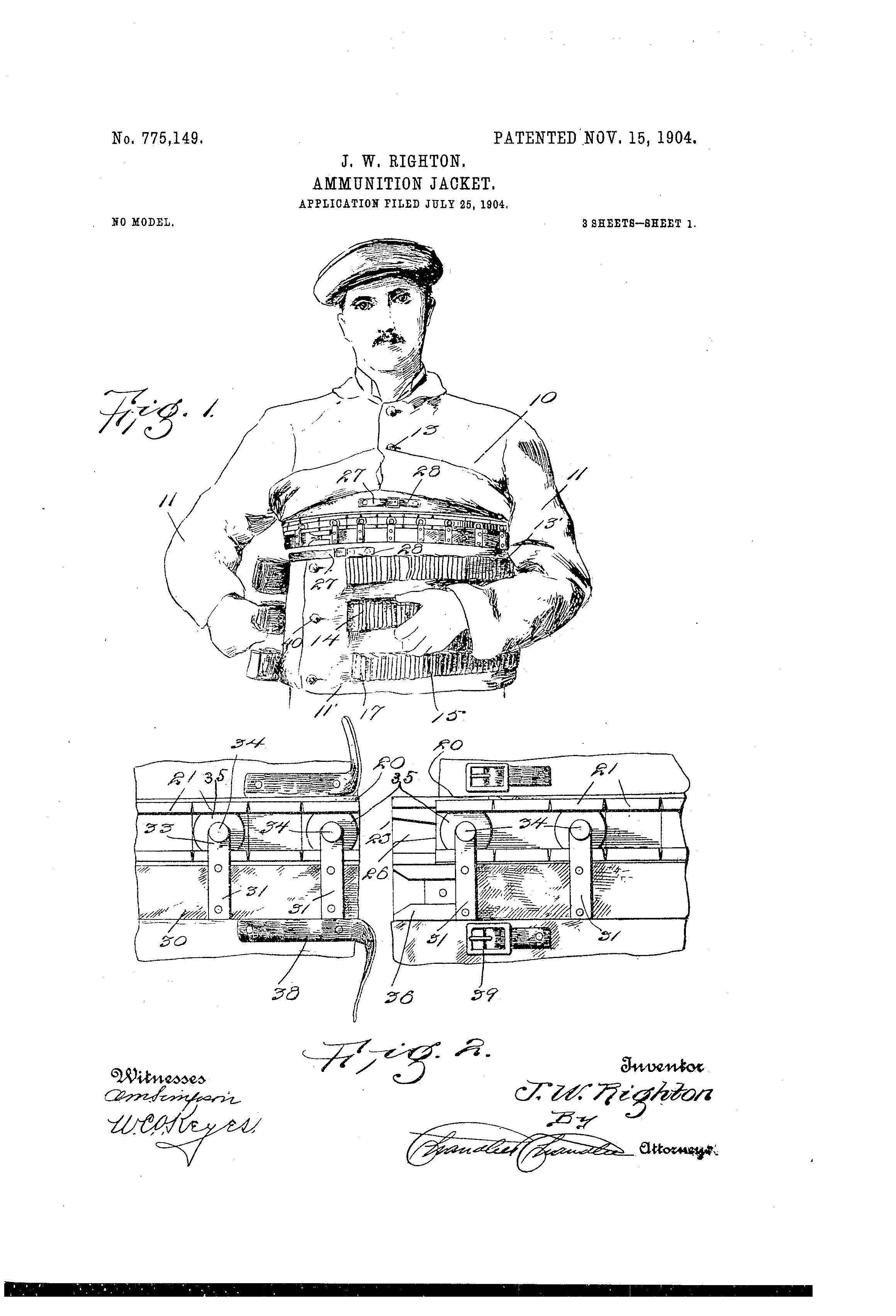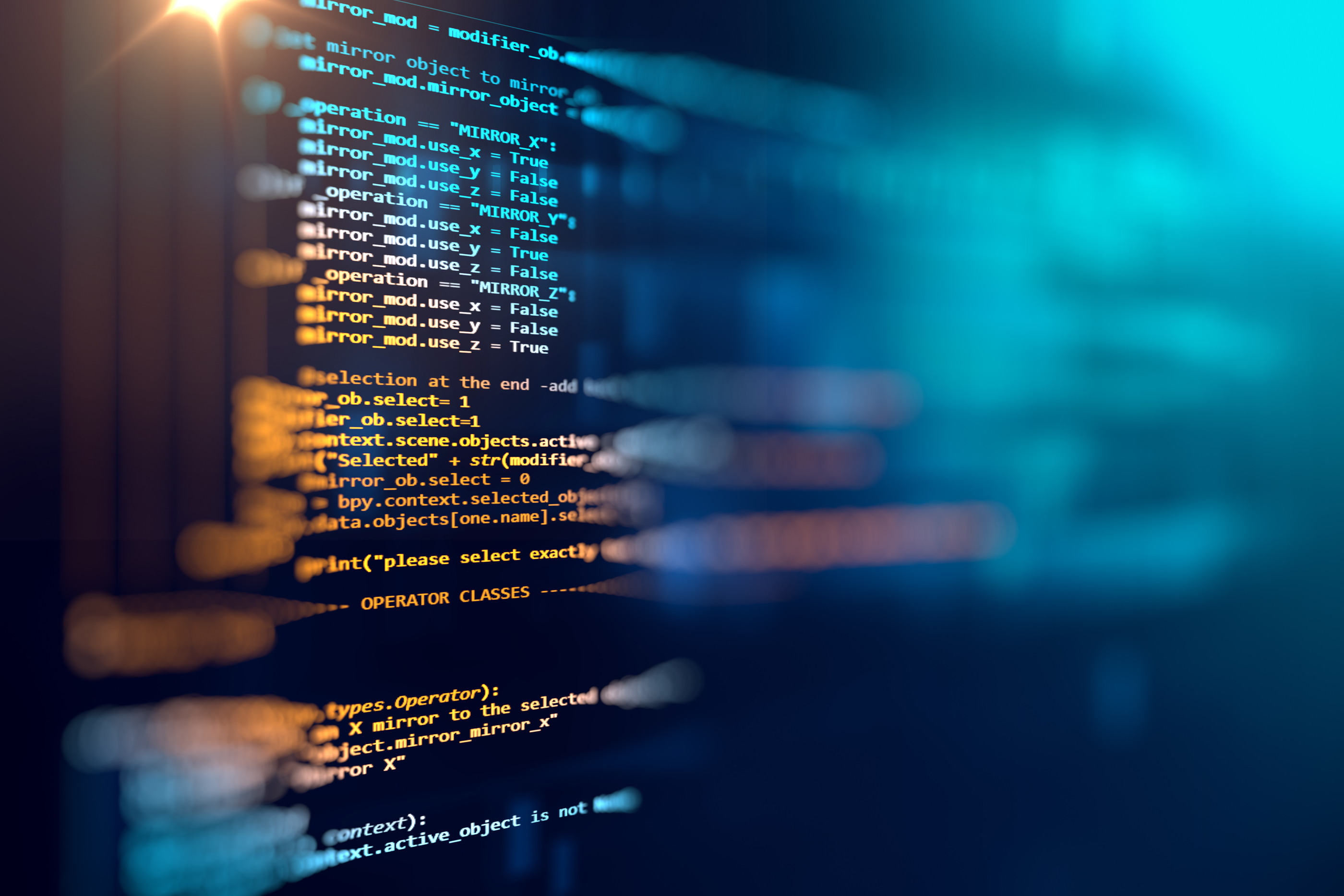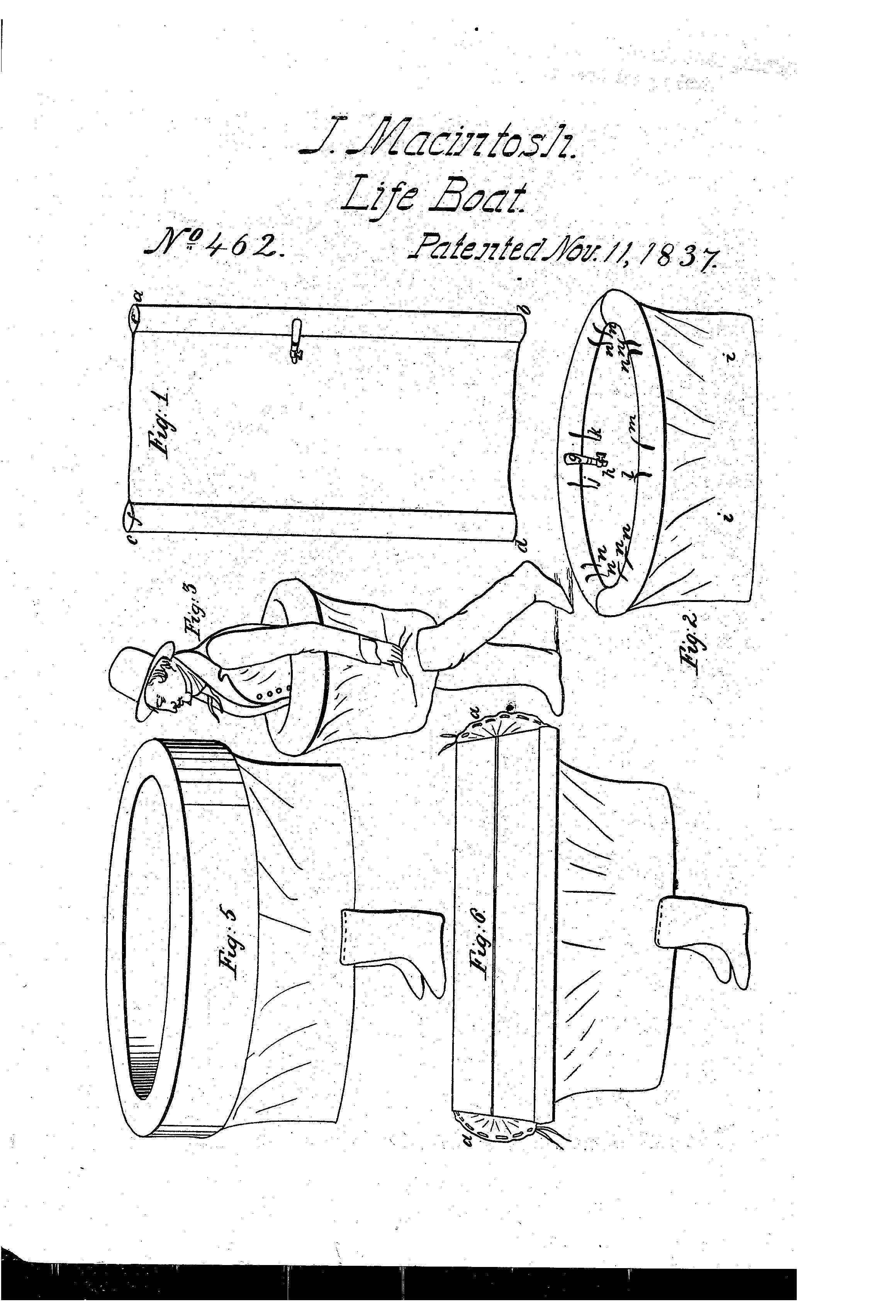Thanksgiving Patent of the Day: Combined Cornucopia and Candleholder
On April 7, 1959 Gilbert Josephson was granted the design patent for a COMBINED CORNUCOPIA AND CANDLEHOLDER. U.S. Patent No. D184,815.
Cornucopias are very popular during Thanksgiving, their latin translation is horn of plenty and over the years cornucopias have come to be a symbol of prosperity, good fortune, and fertility. They are made of many different materials such as metal, wood, wicker or ceramic and are filled with many items such as gourds, fruits, and flowers. The cornucopia depicted in this design patent has an added aesthetic element of candleholders added around it.
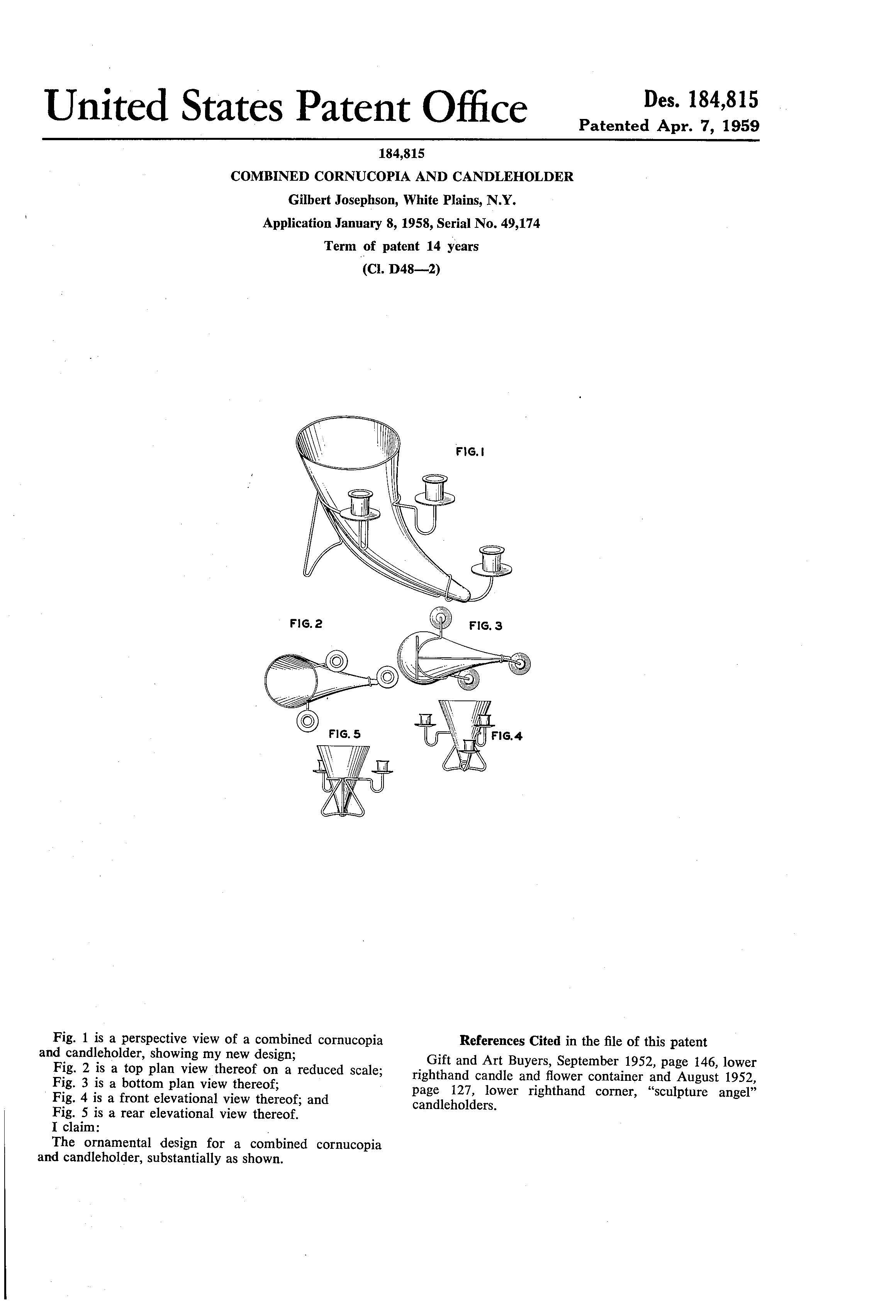
Intellectual Property and Thanksgiving

In September of 1620, a group of 102 religious separatists (now commonly known as Pilgrims) left England on the Mayflower. After 66 treacherous days at sea, the ship landed near the tip of Cape Cod, and thirty days later, the Pilgrims traveled across the Massachusetts Bay to what is now known as Plymouth Rock. The Pilgrims remained on the Mayflower the first winter as they were unprepared for the brutal New England winter that awaited them. More than half the Pilgrims lost their lives due to exposure and disease. That spring, the Pilgrims could not have been more thankful for the Wampanoag Indians who taught them how to cultivate crops, hunt, and survive. In November of 1621, the Pilgrims had a successful harvest, and to celebrate, they invited their Native American friends for a feast, remembered as the “first Thanksgiving”.
Since then many presidents have issued Thanksgiving proclamations and issued days of thanks, but in 1863, 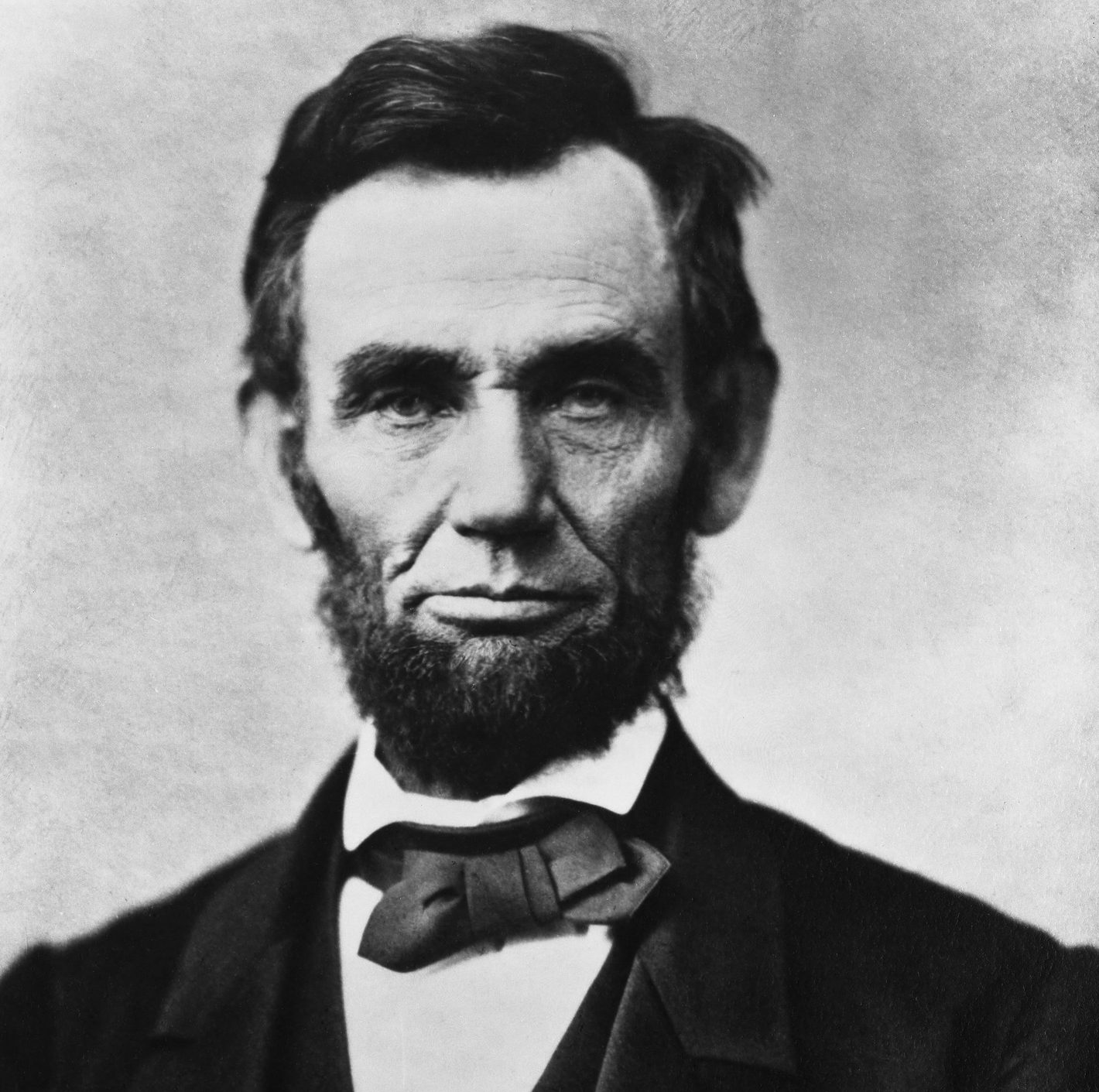 Abraham Lincoln declared Thanksgiving a national holiday. Thanksgiving was scheduled for the final Thursday in November. It remained that way until 1939, when the holiday was moved up a week by Franklin Roosevelt as an effort to stimulate retail sales during the Great Depression. This effort, known as “Franksgiving,” was met with great opposition, and in 1941, Roosevelt signed a bill returning Thanksgiving to the fourth Thursday in November.
Abraham Lincoln declared Thanksgiving a national holiday. Thanksgiving was scheduled for the final Thursday in November. It remained that way until 1939, when the holiday was moved up a week by Franklin Roosevelt as an effort to stimulate retail sales during the Great Depression. This effort, known as “Franksgiving,” was met with great opposition, and in 1941, Roosevelt signed a bill returning Thanksgiving to the fourth Thursday in November.
Not surprisingly, there exist a number of Thanksgiving-related items that have benefited from strong intellectual property protection, including patents and trademarks.
One of the main items consumed on Thanksgiving is turkey. Surprisingly, turkey has many patents and trademarks associated with it. These can range from methods of preparing turkey to different brands of turkey.
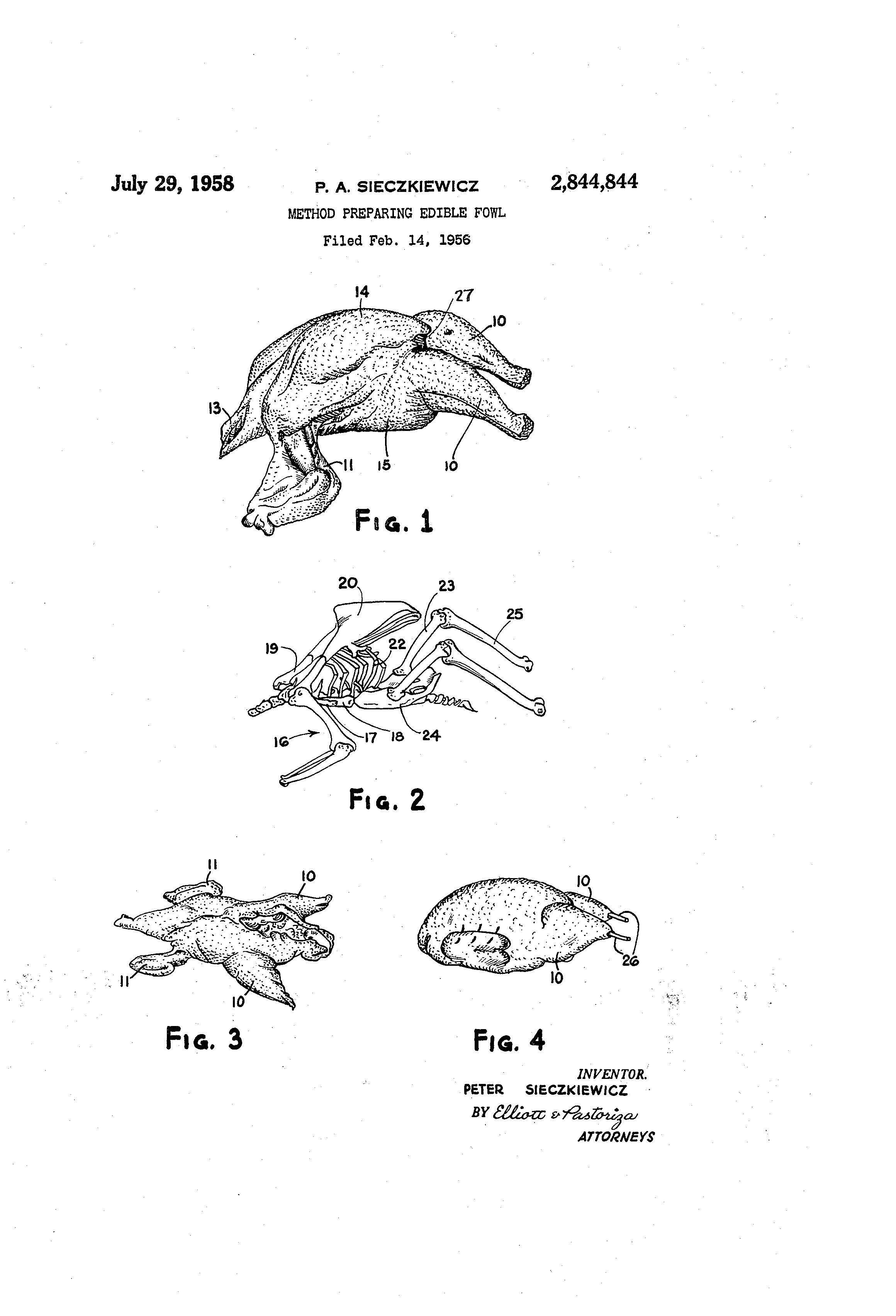 For some, preparing a turkey can be a challenge, fortunately, Alan B. Rogers et al. invented a process of preparing a frozen stuffed fowl (U.S. Patent No. 2,928,748). Peter A. Sieczkiewiz patented a METHOD OF PREPARING EDIBLE FOWL (U.S. Patent No. 2,844,844) as a way to facilitate the preparation process.
For some, preparing a turkey can be a challenge, fortunately, Alan B. Rogers et al. invented a process of preparing a frozen stuffed fowl (U.S. Patent No. 2,928,748). Peter A. Sieczkiewiz patented a METHOD OF PREPARING EDIBLE FOWL (U.S. Patent No. 2,844,844) as a way to facilitate the preparation process.
The technologies used to prepare Thanksgiving dinner have also been 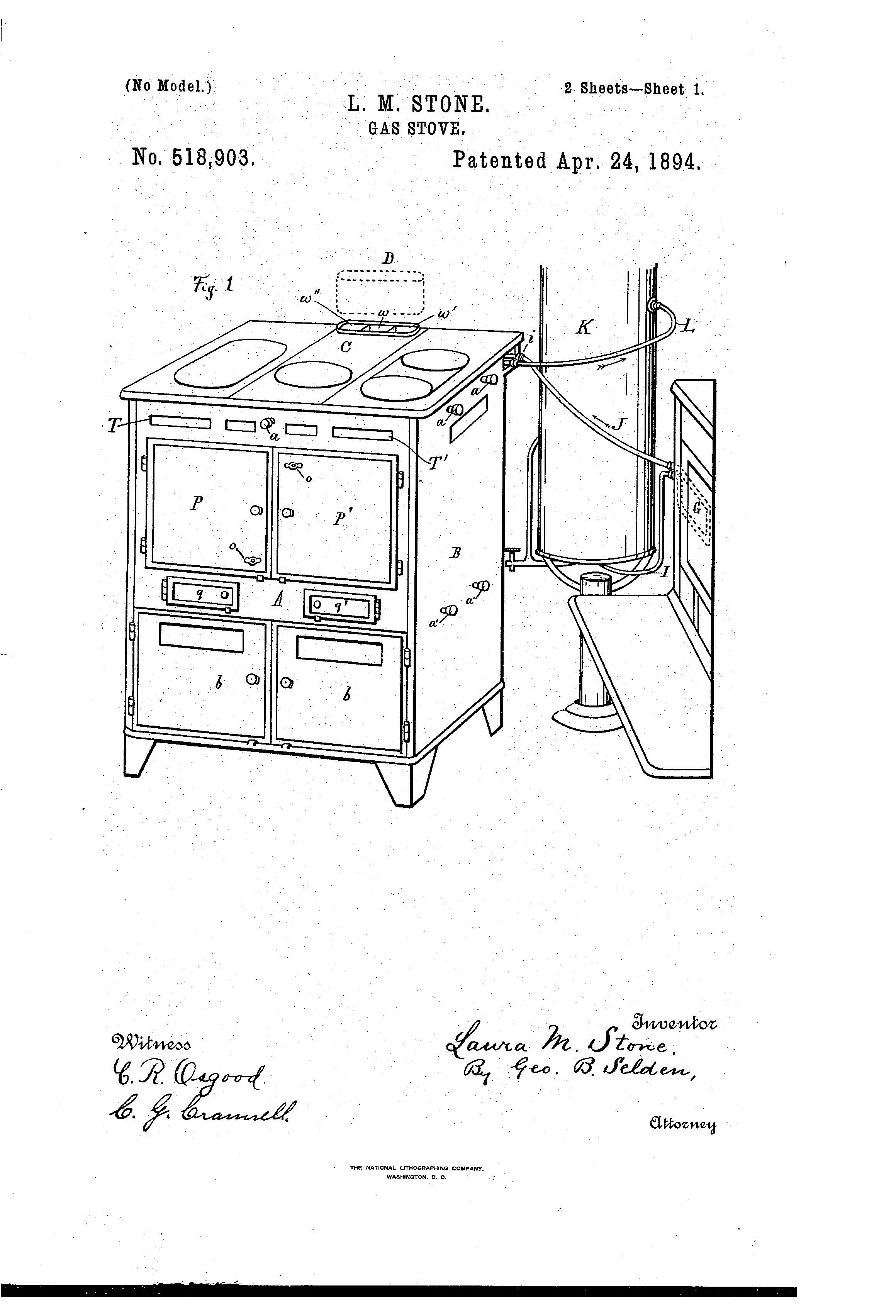 frequently protected via patents. One of the first gas stoves was patented in 1894 by Laura M. Stone. This gas stove was equipped with a roasting oven with two compartments, each having a large burner (U.S. Patent No. 518,903).
frequently protected via patents. One of the first gas stoves was patented in 1894 by Laura M. Stone. This gas stove was equipped with a roasting oven with two compartments, each having a large burner (U.S. Patent No. 518,903).
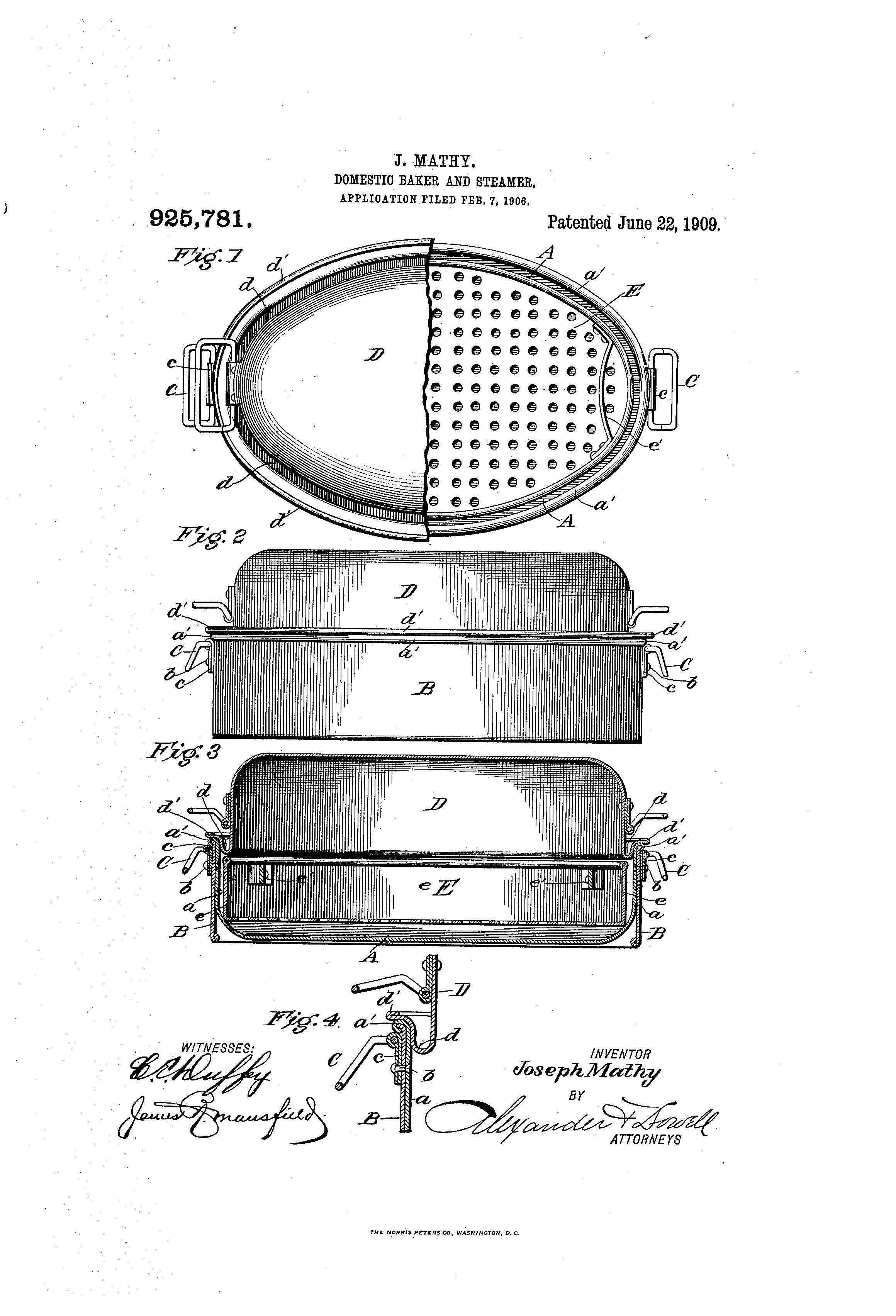 One of the first roasting ovens patented in 1909 by Joseph Mathy (U.S. Patent No. 925,781) was designed so the turkey is cooked perfectly without the need to baste. The roaster creates a steam that essentially bastes the turkey on its own.
One of the first roasting ovens patented in 1909 by Joseph Mathy (U.S. Patent No. 925,781) was designed so the turkey is cooked perfectly without the need to baste. The roaster creates a steam that essentially bastes the turkey on its own.
One way to cook a turkey is by using a smoker. David M. Cox, Jr. was granted the patent for MEAT SMOKER (U.S. Patent No. 4,700,618) in 1987. This particular smoker is portable and contains a fire box and a smoker oven vertically and laterally offset from the fire box.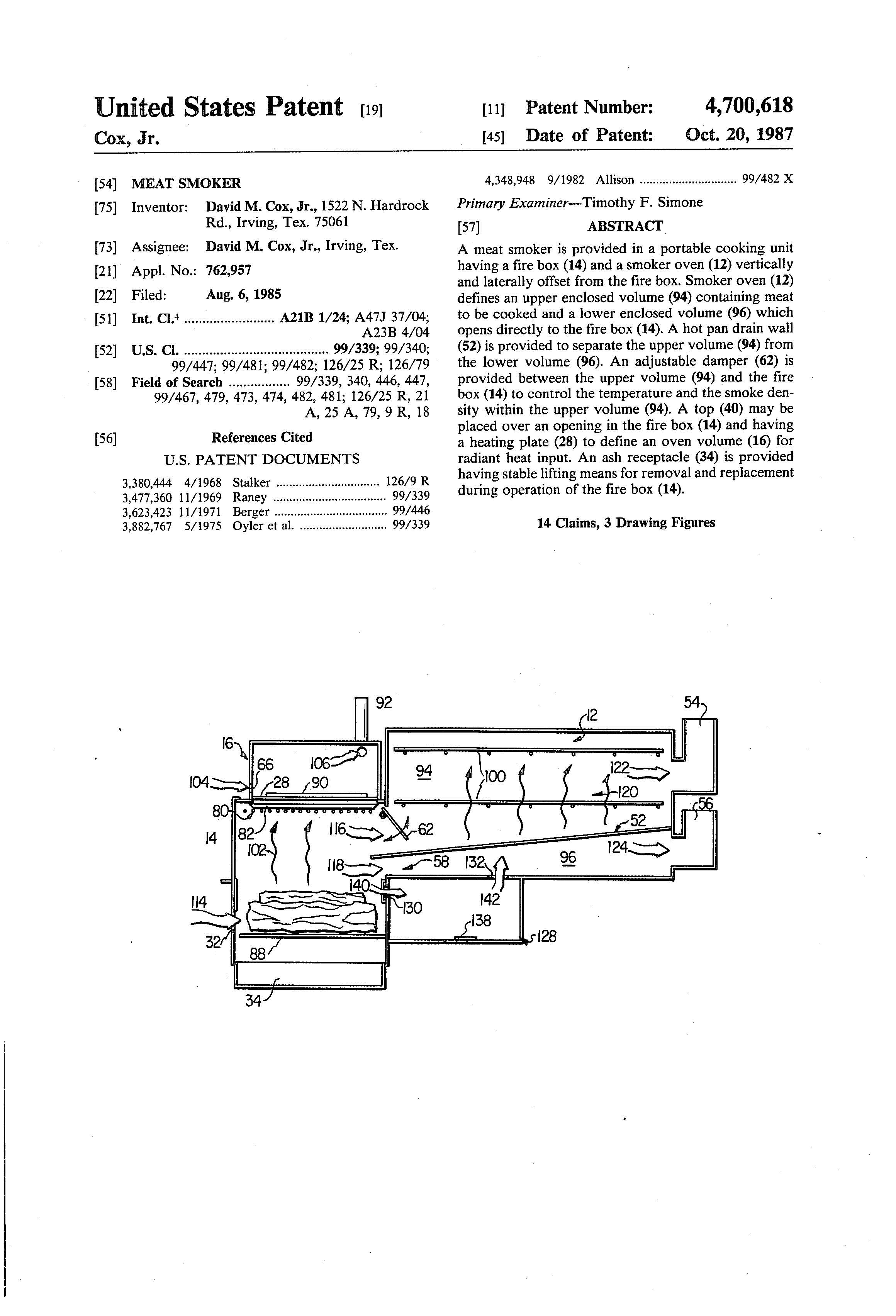
A patent for a POULTRY FRYING APPARATUS (U.S. Patent No. 5,758,569) was granted on June 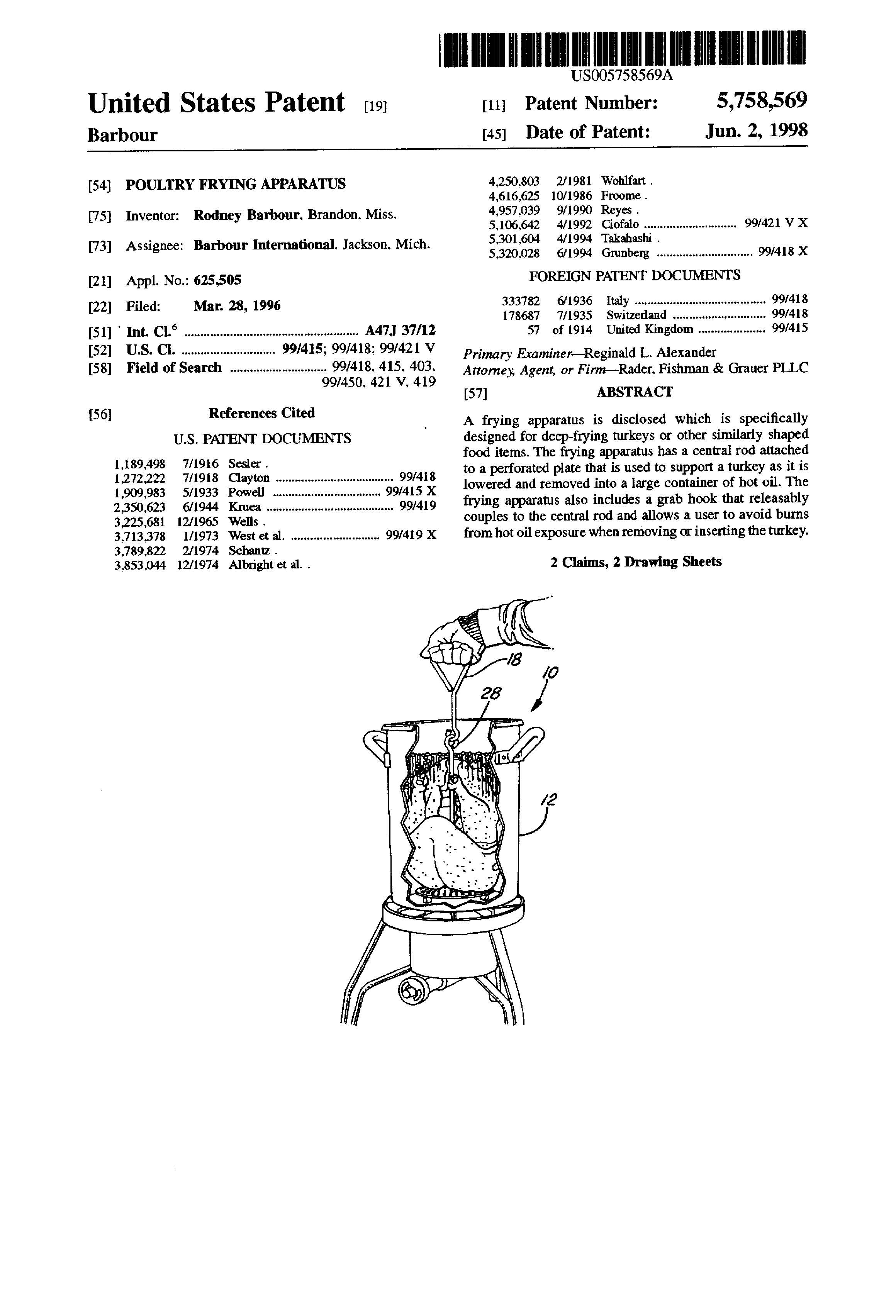 2, 1998 to Rodney Barbour. This apparatus is designed specifically for turkeys and contains a central rod to raise and lower the turkey while allowing the user to avoid burns from the hot oil.
2, 1998 to Rodney Barbour. This apparatus is designed specifically for turkeys and contains a central rod to raise and lower the turkey while allowing the user to avoid burns from the hot oil.
Once the menu is set another great way to get into the spirit of this day is with decorations, and, not surprisingly, there are numerous design patents used to protect Thanksgiving decorations. Below is a list of a few design patents for Thanksgiving.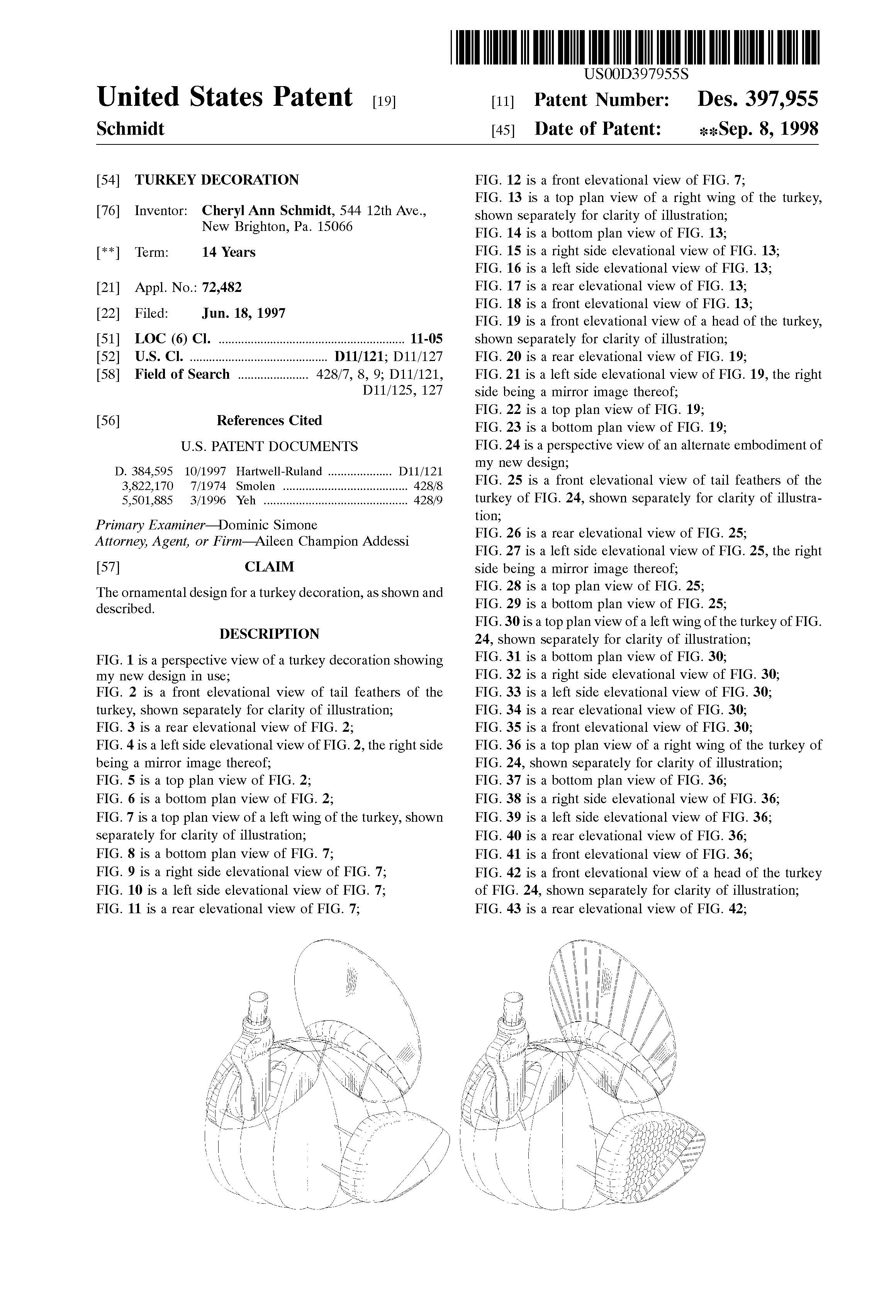
TURKEY DECORATION (U.S. Patent No. D397,955)
 COMBINED CORNUCOPIA AND CANDLEHOLDER (U.S Patent No. D184,815).
COMBINED CORNUCOPIA AND CANDLEHOLDER (U.S Patent No. D184,815).
THANKSGIVING EMBOSSED INSERT FOR BAKING PAN (U.S. Patent No. D527,217).
Thanksgiving Trademarks
When eating all these delicious Thanksgiving treats, trademarks are not usually the first thing that cross your mind. However, the next time you sing the often misunderstood Sara Lee jingle “nobody doesn’t like Sara Lee,” keep in mind that it is a trademarked slogan (US Registration No. 1885156). Other common Thanksgiving-related related trademarks include the trademark for Stovetop brand stuffing mix (US Registration No. 0949459) and the Butterball turkey brand (US Registration No. 1151836).
We at Suiter Swantz IP would like to wish everyone a safe and happy Thanksgiving and leave you with this fun poem:
May your stuffing be tasty. May your turkey plump. May your potatoes and gravy have nary a lump. May your yams be delicious. And your pies take the prize. And may your Thanksgiving dinner stay off your thighs! ~Unknown Author
Thanksgiving Patent of the Day: Method of Preparing Edible Fowl
On February 14, 1956, Peter A. Sieczkiewicz was granted the patent for METHOD OF PREPARING EDIBLE FOWL. U.S. Patent No. 2,844,844.
This invention relates to preparing and processing a fowl, specifically a turkey, for consumption. This method has the user remove the bones from the turkey in such a manner as to preserve the outer skin. This method allows the user to stuff the turkey, pre-cook and/or freeze it.
For some, dressing and preparing a turkey can be quite stressful. This method takes away that stress by giving a detailed description on the way to prepare the turkey while not detracting from the natural appearance of the bird or the skin. It is also noted there is more than one way to prepare the turkey and that is detailed in the claims as well.

Thanksgiving Patent of the Day: Turkey Fryer with Vertically Stacking Cooking Racks
On September 27, 2011, Robert L. Boyer was granted the patent for TURKEY FRYER WITH VERTICALLY STACKING COOKING RACKS. U.S. Patent No. 8,025,007.
This present invention is a deep frying apparatus for cooking food items within a deep stock pot. The apparatus includes a pot-shaped basket and a plurality of stackable cooking racks with flat screen bodies and spaced handles which project vertically from the screens and which concomitantly provide a loop for handling each rack and for spacing apart adjacent stacked racks. A bottom-most cooking rack further includes feet which raises the bottom-most rack’s screen above a bottom wall of the basket when inserted therein.




Michelle Lee Reminds Trump of the Importance of IP

Many people in the intellectual property arena are wondering how Donald Trump’s presidency will affect the world of intellectual property. President-Elect Trump, no stranger to intellectual property, has had his own dealings with intellectual property through his businesses and his run for President. He has spent thousands of dollars to protect his Trump brand and more recently, spent $100,000.00 to buy the rights to “Make America Great Again” from radio host Bobby Bones.
Although President-Elect Trump has worked to protect his intellectual property, his views on intellectual property are unclear and so too is his vision for the United States Patent and Trademark Office (USPTO).
In her first Post-Election speech, Director of the USPTO, Michelle Lee, shared her thoughts on intellectual property after the Obama administration:
I believe the incoming administration must and will continue our effort to promote innovation fueled by a strong and robust IP system. Support for IP in the United States has a long history of bipartisanship, and there’s no reason to imagine that changing with a new president and a new Congress, both of whom have economic growth as a top priority. . .
I’m optimistic the incoming administration will share our appreciation of the importance of intellectual property as a driver of economic growth… I would hope any legislative proposal will take into account the numerous positive changes that have occurred recently in the patent system including: through the courts, including on attorneys fees, pleading requirements and discovery limits, and at the USPTO through the PTAB and the agency’s efforts to improve the quality of patents in our system…
Further, I anticipate that the USPTO’s work across the globe to ensure that other countries have strong IP protections adequate enforcement mechanisms and remedies, and appropriate technology transfer (or licensing and competition) policies, will continue in the next Administration particularly in such countries as China and others. This is a President-elect that has promised economic growth and job creation in our country, and IP will necessarily be a key piece to achieving that goal. . . .
Michelle Lee’s full remarks can be read here.
We recently wrote on President-Elect Trump and his stance on intellectual property. While Trump tends to focus more on trade-based initiatives, he has also focused on deterring infringement on U.S. intellectual property. For example, one of his initiatives is aimed at ending China’s intellectual property violations by “enforc[ing] stronger protections against Chinese hackers and counterfeit goods.” Trump has also stated that “going forward, we will adopt a zero tolerance policy on intellectual property theft and forced technology transfer.”
Patent of the Day: Furnace
On this day in 1941 Moritz L. Mueller was granted the Patent for FURNACE. U.S. Patent No. 2,263,098.
This invention relates generally to furnaces and has particular reference to a furnace which is arranged to positively circulate and filter the air being heated.
It is an object of this invention to provide a furnace in which the novel arrangement of the parts of the furnace provide for an efficient and compactly arranged furnace so that the overall dimensions are relatively small.
It is another object of this invention to provide a furnace which may be prefabricated in sections so that very little work is required in the field to assemble the furnace.
It is another object of this invention to provide heat exchange surfaces within a furnace in such a manner as to make use of practically all the heat generated by the burner. It is another object of this invention to provide a furnace in which the draft within the combustion chamber is maintained at a relatively constant figure by means of a suction blower in the exhaust passage to the chimney.
It is another object of this invention to provide a furnace in which power for the process of combustion and power for circulating the air being heated is provided by a single motor.




Patent of the Day: Carbonizing Apparatus
On this day in 1903 Bernhard Zwillinger was granted the patent for CARBONIZING APPARATUS. U.S. Patent No. 744,666.
This invention relates to apparatus for carbonizing material, such as wood, in a comparatively short time and for saving the valuable gases which are drawn off during the carbonization process, and has for a further object to very quickly cool the carbonized material, whereby the capacity of the plant is materially increased, since it may be recharged with a much smaller delay than hitherto. I hereinafter set forth this invention as carried out in carbonizing the material and carrying away the by-products through the agency of a highly-heated gas, simple or compound, which at least during a part of the operation must be a gas not readily supporting combustion. Air deprived of much of its oxygen and loaded with aqueous vapor is such a gas, as is also ordinary air mingled with a proper proportion of such fixed gases as are set free during and as a result of the carbonizing operation.


Patent of the Day: Toothbrush with Liquid Container
On this day in 1965 Bernard Cyzer was granted the patent for TOOTHBRUSH WITH LIQUID CONTAINER. U.S. Patent No. 3,217,720.
Toothbrushes are known in which a cavity provided in the handle is connected with the brush head by a feed duct, and means are provided for squeezing a pasty dentifrice, treating liquid dentifrice, mouthwash, or the like (all of which treating liquids will collectively be referred to herein as “liquid dentifrice” for short), stored in the cavity, through the feed duck and into the clearances between the bristles or other brushing elements.
In a known toothbrush of this kind, the cavity is cylindrical and a piston mounted on a knob-operated spindle is movable into the feed-duct. In this and similar toothbrushes, the liquid dentifrice is not sufficiently sealed off from the air, and it is therefore apt to be contaminated by germs or other impurities carried by the air, as well as to trickle or seep out of the container of its own accord. The invention has the object of providing a toothbrush provided with a supply of liquid dentifrice accommodated in the brush-handle (to be called hereinafter a “toothbrush of the kind referred to”) which is free from the drawbacks stated above.
The invention consists of a toothbrush of the kind referred to, comprising at least one treating-liquid container, provided with an outlet closed by a self-sealing closure member, which container is lodged in a cavity located in a part of the toothbrush connected to the brush-head by a feed-duct; a hollow needle in conjunction with the feed duct; an operating member adapted to be actuated so as to bear against a resilient wall portion of the container and to shift the container towards the feed-duct, thereby urging the closure member of the container against the needle-tip for piercing the container in order to absorb a certain amount of the liquid dentifrice, which at the same time has been concentrated in the forward region of the container, and to pressure squeeze this certain amount of liquid into the brush-head; and biasing means for returning the container to its starting position when the operating member is released.
The container may be made from any suitable material, e.g. plastic, rubber or the like. In a preferred embodiment of the invention, it comprises a rigid part with open bottom and neck portions, which are closed respectively by a bottom cap having a resilient neck seal. The neck seal may be in the form, for example, of a membrane stretched across the mouth or of a plug of resilient material shaped correspondingly hollow in its inside and inserted in the mouth and bottom openings.


Patent of the Day: Ammunition Jacket
On this day in 1904 Joseph W. Righton was granted the patent for AMMUNITION JACKET. U.S. Patent No. 775,149.
This invention relates to ammunition-jackets; and it has for its object to provide a jacket which may be easily and quickly applied and removed and in which the carrying portion or skirt of the coat or jacket may be readily shifted, so as to bring the front the filled portions of the belts.
A further object of this invention is to provide a jacket which will hold a maximum quantity of ammunition with convenience.



Patent of the Day: Ruby Laser Systems
On this day in 1967 Theodore H. Malman was granted the patent for RUBY LASER SYSTEMS. U.S. Patent No. 3,353,115.
This invention relates to the generation, amplification, and utilization of electromagnetic waves in the infrared, visible and ultraviolet portion of the spectrum, and more specifically to lasers and laser systems. A laser, the term being an acronym for light amplification by stimulated emission of radiation, is a device capable of generating or amplifying coherent light. The principle of operation is similar to that of a maser and is therefore also referred to as an optical maser.
Much effort has been expended in the fields of electronics and physics in attempts to generate or amplify coherent light. Such an achievement, it was known, would make available a vast new region of the electromagnetic spectrum for a multitude of purposes including communications and metrology (measurements) applications. Such coherent light would have the properties of being monochromatic and of having its component waves prop a gating in phase with each other. Thus, as at radio or microwave frequencies, a great deal of energy could be concentrated at or extremely near to a single frequency and be utilized in methods analogous to those at radio frequencies.
Ordinary techniques of generating or amplifying electromagnetic waves, including microwave maser techniques, cannot be extended usefully into the optical frequencies because such techniques require components, such as maser cavities, for supporting wave oscillations which must have physical dimensions of the order of a wavelength. Obviously, such components can neither be manufactured nor meaningfully utilized at optical frequencies where the wavelengths are of the order of atomic dimensions. When it is attempted to use cavities which have dimensions corresponding to a large number of wavelengths, many modes are supported, coherence is degraded, and impracticably large sources of pumping power are required.
A laser has been proposed by Schawlow and Townes, see United States Patent No. 2,929,922, issued March 22, 1960, which suggests using as the negative temperature medium certain gaseous state materials such as alkali metal vapors. Such materials may be shown to have energy levels in their atomic systems corresponding to appropriate optical frequencies for absorbing optical pump energy to invert the population from the stable equilibrium state and thus provide the material with what is known as a negative temperature or excited, non equilibrium state. Then by stimulation or spontaneous relaxation the atomic system falls back to its normal equilibrium state by one or more steps emitting energy of certain optical frequencies.
Such proposed gaseous state devices are of great interest its theoretical models and represent significant academic advances, however, they have not been shown to provide it not generation or amplification of light. In addition, the structure of gaseous state systems is complex and requires the mainttenance of critical vapor pressures and temperatures. Impurities in the gas is another very serious problem. The inter-atomic spacing of the gas severely limits the efficiency of coupling between the stimulated emission and a coherent wave propagating through the medium. In addition, the frequency of operation of any given gas laser may be effectively tuned only by Stark or Zeeman effects which can provide a tuning range of only approximately 5X1011 cycles per second. Further, the construction of a gas cell is extremely critical in that the end plates must be highly reflective and perfectly parallel so that the many reflections required because of the low density gaseous material will be accomplished.
It is therefore an object. of the present invention to provide an operable, low noise. efficient laser.
It is another object to provide a laser which is mechanically stable and of noncritical construction.
It is another object to provide a laser which operates at room temperature or cryogenic temperatures for additional simplicity and even greater flexibility in design parameters.
It is another object to provide a laser which does not require critical vacuum or vapor pressure techniques and which operates in a medium of high dielectric constant.
It is another object to provide a laser capable of much higher power handling.
It is another object to provide a laser which is tunable over aproximately a 5X1011 cycles per second range.
It is another object to provide an optical radar system utilizing the advantages of a laser.
Briefly, these and other objects are achieved in accordance with the present invention in a system including a solid state negative temperature medium. In one example a segment of solid state.





Software Patent Considerations for Startups in Light of USPTO McRO, Inc. Memo
We talk to new and small business owners all the time about intellectual property in the earliest phases of business development. In a “first-to-file” world, the patent portion of that discussion usually boils down to:
1) Figure out what you are doing that might be inventive, and
2) File a provisional patent application as soon as you possibly can.
Invariably, some of those small business owners started out as software developers, and are now offering software products and services. Almost every one of them believes that software is not patent eligible and many believe that software patents are only a tool for multi-national corporations to squeeze them out of the market.
It is true that Microsoft, Google, Apple, Samsung, and IBM have large software centered patent portfolios . . . because they each employ huge numbers of computer engineers whose job is to solve problems in inventive ways. Patents are the natural result. But just as their patent portfolios can pose an obstacle to a small business, the small business owner’s targeted patent portfolio might be the only leverage the small business owner has over the big players, or maybe even the only avenue to monetization. That cannot happen if the small business owner rejects the very concepts of software patents.
Software is such an important part of the economy, and so central to innovation in the modern world, patent practitioners have pursued every avenue to keep software patents alive and viable. At the same time the United States Supreme Court has been increasingly weary of giving patent protection to inventions that aren’t embodied in a physical thing.
The contemporary avenue for protecting software is to define it as a set of steps for achieving a desired outcome; or as a computer or computer system, programmed via software, to execute the set of steps. That avenue has become subject to the “Abstract Idea” analysis of § 101 of U.S. patent law. In an attempt to streamline the process of rejecting marginal software based inventions, the Supreme Court defined well known steps executed by conventional hardware (which should be rejected under § 102 or § 103), or inventive steps that are only vaguely or generally defined (which should be rejected under § 112) as “abstract ideas” so that they can be rejected under § 101; I think solely because 101 is a lower number than 102, 103, and 112.
Now, finally, we have some concrete guidance from the U.S. Court of Appeals for the Federal Circuit (traditionally the most prolific and thoughtful court on patent questions). In a memorandum following two subject matter eligibility decisions, McRO, Inc. dba Planet Blue v. Bandai Namco Games America Inc., 120 USPQ2d 1091 (Fed. Cir. 2016) and BASCOM Global Internet Services v. AT&TMobility LLC, 827 F .3d 1341 (Fed. Cir. 2016), the USPTO has issued a few guidelines to help the examiners (and us) determine if software is patent eligible. In conjunction with the USPTO Subject Matter Eligibility Worksheet, we should be able to give small software business owners a reasonable framework for analyzing their inventive concepts.
First, the examiner is supposed to reduce the invention to a simplified description. Some examiners prefer an overly simplified description, so the small business owner should consider casting his invention in technical terms that defy reductionism.
If, on its face, the simplified description falls into a statutory category (such as a computer or a computer executed process), the examiner will still consider the invention non-statutory if the steps being performed are well known and the only new material is that the steps are executed by a machine; even if the steps are fairly complex. The small business owner should consider whether the invention includes steps that are previously unknown, or at least unknown within whatever context the small business owner is operating. The relationship of components can be critical; for example do steps occur in a particular order that is previously unknown, or are certain steps performed locally while others are performed remotely.
If the previously unknown steps are only described in vague or general terms, the examiner will still call it an abstract idea. The small business owner should be able to describe the previously unknown steps in precise terms, including acceptable ranges of inputs, acceptable ranges of outputs, and the algorithms being implemented.
Finally, the examiner will consider the purpose of the invention. Prior to McRO, the conventional wisdom was that processes that amounted to just crunching numbers, without some interaction with the physical world, would not be patent eligible. Software used in a physical production process is probably still the closest thing we have to a “safe harbor” in this domain; but now, software that improves the functioning of the computer (for example, a data structure that solves a persistent data storage problem) or that solves a persistent problem in another technical field can be considered patent eligible. The important consideration in these cases is to define the problem that is being solved and including a description of the invention specifically directed to solving that problem.
So, as a small software business owner, you should seriously consider patent protection for your prospective product or service at the earliest possible time, before launch or public disclosure, if:
• Your software is used in a physical production process;
• Your software produces an output that has an impact in the real world; or
• Your software improves the internal functioning of the computer or computer system in some way;
And
• Your software executes a combination of steps that would not be obvious, even if your software utilizes standard libraries;
• You can describe whatever features make the combination not obvious in a definitive way with clear boundaries; and
• You can describe the technical problem you’re solving and tailor the invention to solve it.
Patent of the Day: Life Boat
On this day in 1837 John Macintosh was granted the patent for LIFE BOAT. U.S. Patent No. 462.
A canvas is taken, of other flexible material, and render it impervious to water by means of a solution of caoutchouc, or in any other of the known ways of effecting this object; and of this flexible material, so saturated, the vessel which is to contain the persons, or things intended to be buoyed up, and conveyed upon the water. Such a vessel may be made to assume a variety of forms dependent upon the purpose for which it is to be used, whether for one or more persons, the transportation of troops and baggage, or for other objects.



